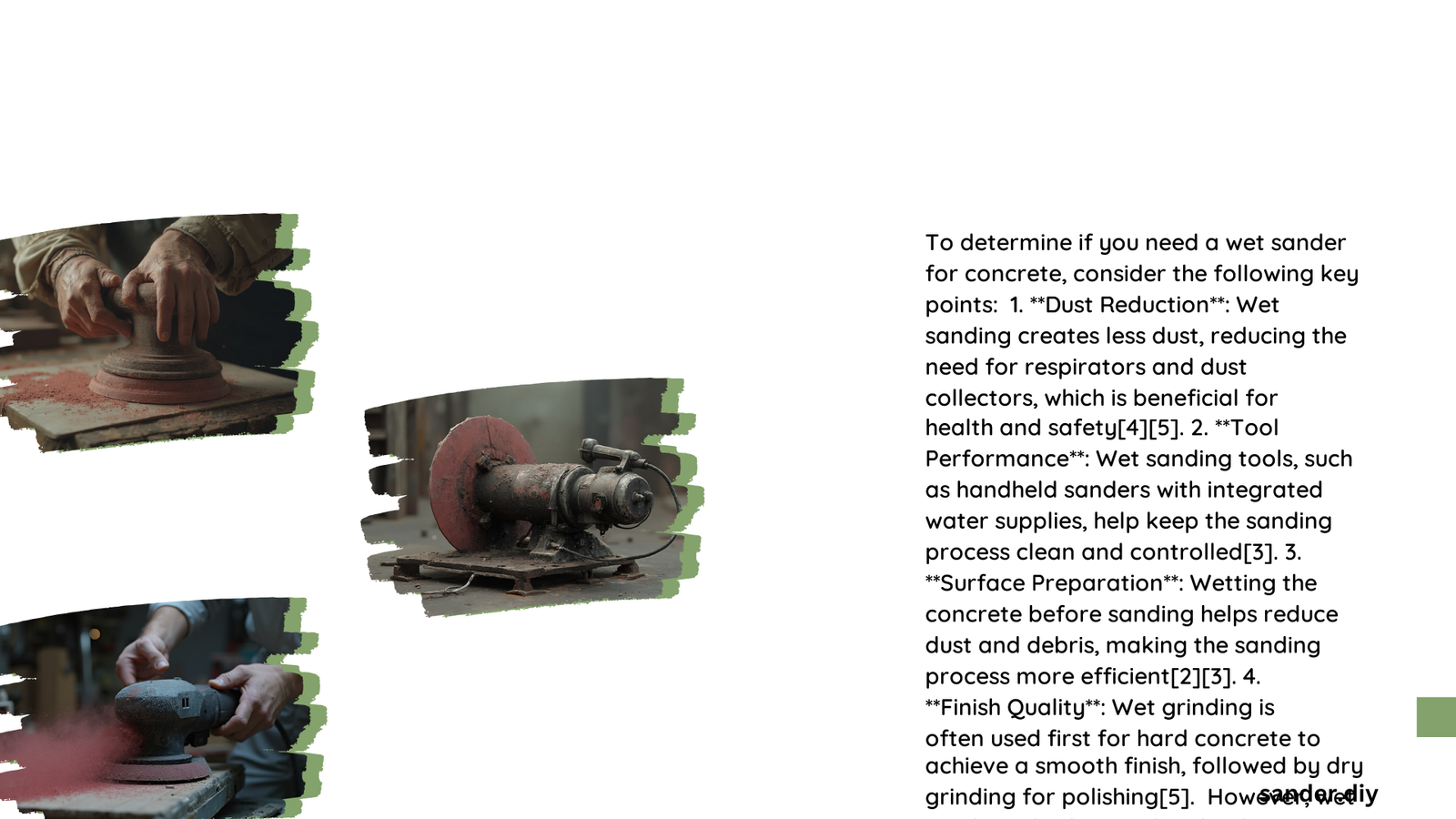Concrete surface preparation demands strategic tool selection, and understanding whether a wet sander is necessary can significantly impact project quality and efficiency. Wet sanders offer unique advantages for specific concrete conditions, including dust reduction, tool cooling, and surface treatment, but they’re not universally applicable. Professionals and DIY enthusiasts must evaluate concrete hardness, project scale, environmental conditions, and desired finish to determine the most appropriate sanding approach.
What Determines the Need for a Wet Sander?
When Should You Consider Wet Sanding Concrete?
Wet sanding becomes crucial under specific circumstances:
- Concrete Hardness: Very dense, hard concrete surfaces
- Dust Control: Environments requiring minimal airborne particles
- Surface Temperature Management: Preventing tool overheating
- Professional Finishing: Traditional polishing techniques
What Are the Key Advantages of Wet Sanding?
| Advantage | Description | Impact |
|---|---|---|
| Dust Reduction | Eliminates airborne silica particles | Health Safety |
| Tool Preservation | Cools diamond tooling | Equipment Longevity |
| Surface Preparation | Helps remove scratches | Uniform Processing |
How Does Concrete Hardness Influence Sander Selection?
Different concrete compositions require tailored approaches:
- Soft Concrete
- Dry sanding preferred
- Faster processing
-
Smoother finish
-
Hard Concrete
- Wet sanding recommended
- Better heat dissipation
- Prevents tool glazing
What Equipment Do You Need for Wet Concrete Sanding?
Essential equipment includes:
- Diamond grinding machines
- Water supply system
- Wet vacuum for slurry removal
- Protective gear
- Diamond-grit attachments with water ports
What Are the Potential Drawbacks of Wet Sanding?
Challenges to consider:
- Significant water consumption
- Slurry disposal complexities
- Extended project timelines
- Potential bearing damage in equipment
- Additional cleanup requirements
How Do Grit Sizes Impact Wet Sanding Performance?
Grit progression determines surface quality:
- Coarse Grit (40-60): Initial grinding, surface stripping
- Medium Grit (80-120): Smoothing minor imperfections
- Fine Grit (200-400): Achieving ultra-smooth finishes
What Cost Considerations Exist?
Initial Investment
- Dry grinding: Higher dust extraction costs
- Wet grinding: Lower initial equipment expense
Maintenance Expenses
- Dry systems: Less maintenance
- Wet systems: More frequent cleaning and potential bearing replacements
Pro Tips for Concrete Wet Sanding
- Always assess concrete composition first
- Use appropriate water flow rates
- Invest in quality diamond tooling
- Implement proper slurry management
- Prioritize personal protective equipment
Final Recommendations

Choose wet sanding when:
– Working with extremely hard concrete
– Dust exposure is a critical concern
– Traditional polishing methods are preferred
– Surface cooling is essential
Opt for dry sanding when:
– Dealing with softer concrete surfaces
– Seeking faster project completion
– Requiring immediate surface coating
– Minimizing water usage
Conclusion
Selecting between wet and dry sanders depends on multiple factors. Carefully evaluate your specific concrete surface, project requirements, and environmental conditions to make an informed decision.
